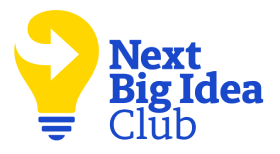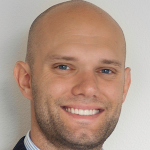Rich Diviney spent 21 years as a Navy SEAL, leading and operating on missions around the globe. In that time, he completed multiple combat deployments and had the honor of serving as the Commanding Officer of a SEAL Command. One of his most pivotal roles was running a specialized Selection and Assessment program for one of the most elite SEAL units. He also spearheaded the SEALs’ “Mind Gym” to train soldiers’ minds to perform better under stress. Today, he teaches optimal performance to thousands of business, athletic, and military leaders.
What’s the big idea?
What makes someone able to thrive in conditions of extreme stress, challenge, and uncertainty? Why do some people falter when the pressure rises, while others step forward with clarity and strength? High performance under pressure isn’t limited to Navy SEALs. It’s not about being fearless or superhuman. It’s about tapping into human capabilities that we all possess—capabilities that can be trained, honed, and applied in any environment.
Below, Rich shares five key insights from his new book, Masters of Uncertainty: The Navy SEAL Way to Turn Stress into Success for You and Your Team. Listen to the audio version—read by Rich himself—in the Next Big Idea App.
1. Uncertainty is the only certainty.
On May 2, 2011, a SEAL team launched one of the most daring missions in modern history: the operation to capture or kill Osama bin Laden. They trained relentlessly. They built a replica of the compound. They rehearsed every move, down to the second.
The moment they got on target, everything changed. One of the helicopters crashed. Timelines shifted. Entry points failed. All that preparation didn’t mean much—unless they could adapt.
That mission succeeded not because they had a perfect plan, but because they knew how to perform inside the chaos. That’s what Masters of Uncertainty is about.
Peak performance is a myth. It depends on perfect conditions, and life is rarely perfect. What matters more is optimal performance: showing up with the best you have in that moment, no matter what that best looks like.
In the book, I show you how to develop a fluid kind of performance that is resilient and real. Uncertainty isn’t a curveball. Uncertainty is the game. Once you stop chasing perfection and start learning to thrive inside the unpredictable, you unlock your true edge.
2. The Mastering Uncertainty Method.
High performers don’t have superpowers. What they do have is a system that allows them to take the raw chaos of a moment and make it work in their favor. That system is what I call the Mastering Uncertainty Method. I built it by observing elite SEALs, world-class athletes, and business leaders who consistently perform under pressure. What I noticed was that they weren’t calm by accident. They practiced something specific, something trainable.
“These steps are rooted in how humans are wired.”
The first part of the method—Move Horizons—is what you do when the world is swirling. You anchor in the present and ask, “What do I know? What can I control?” Like George, an ultrarunner who started his journey at 450 pounds. Day one: he bought the shoes. Day two: he put them on. He moved horizons—one mailbox, one street corner at a time—until he ran a marathon.
Then there’s Keep Going, learning to set meaningful goals that trigger the brain’s dopamine system. And Stay Cool, the art of modulating your stress response to stay focused and clear-headed. These steps are rooted in how humans are wired. Once you train them, you’ll discover you were built for uncertainty all along.
3. Attributes, Identity, and Purpose drive behavior.
When everything’s spinning, we like to believe we’ll rise to our training—to our values, our beliefs. But the truth is, we don’t rise. We revert to our instincts and core wiring. That’s why understanding your Attributes, Identity, and Objectives is vital.
I’ll never forget one SEAL candidate during assessment who, on paper, was a rock star. He was physically gifted, razor-sharp, and highly trained. But when things got murky and unpredictable, he couldn’t make decisions. He lacked the attributes we couldn’t teach: adaptability, resilience, situational humility. In that moment, it wasn’t his skills that failed him. It was who he was underneath them.
This part of the book is about helping you discover who you are when things aren’t going according to plan—when the tools fall away and only instincts remain. You’ll learn to identify the traits that drive you, reshape the beliefs that hold you back, and root everything in a sense of purpose that doesn’t crack under pressure. In uncertainty, the person you are matters far more than the roles you play.
4. Dynamic Subordination and trust in teams.
I love to ask teams, “When the plan falls apart, who leads?” Because in high-stakes environments, it’s not always the person with the rank. It’s the person with the clarity.
We call that Dynamic Subordination. It’s a principle we lived by in the SEAL Teams. Leadership flowed to the person with the most relevant expertise in the moment—not the most stripes on their sleeve. That only works in a culture built on trust.
“Leadership flowed to the person with the most relevant expertise in the moment—not the most stripes on their sleeve.”
I remember one mission where our comms guy—normally the quietest person in the room—stepped up mid-operation and made a call that saved lives. He wasn’t the senior guy. He wasn’t the loudest. But he had the best information, and we trusted him enough to follow.
Most teams say they want adaptability, but they don’t build the trust required to make it real. I teach how to build trust, implement dynamic subordination, and create a culture where leadership is a function of moment, not title.
When uncertainty hits, rigid hierarchy cracks. Trust flexes. Flex wins.
5. Stress as a performance enhancer.
Most of us treat stress like the enemy—something to fight off, push down, or escape. But stress isn’t the problem. Misused stress is.
Your stress response—what scientists call autonomic arousal—is built to help you. It gives you energy, alertness, even clarity. It’s what helped me stay sharp jumping out of planes, navigating combat zones, or stepping onto a keynote stage. The challenge is knowing when to turn the dial up and when to turn it down.
This chapter is about rewiring your relationship with stress. I’ll teach you the same breathwork, visual cues, and mental framing used by elite performers. Once you stop fearing stress and start partnering with it, you unlock performance you didn’t know was possible. Stress isn’t the villain. It’s the voltage. You just have to learn how to use it.
Uncertainty isn’t going anywhere. It’s not something we can out-plan, out-muscle, or outrun. But we can learn to meet it with strength, clarity, and purpose. Whether you’re leading a team, navigating change, or just trying to show up better in your life, the ability to move forward in the unknown is a trainable skill. One that starts with awareness, grows with intention, and gets stronger every time you choose to lean in rather than pull back. Learn to master the moment you’re in. That’s where your power lives.
To listen to the audio version read by author Rich Diviney, download the Next Big Idea App today:










